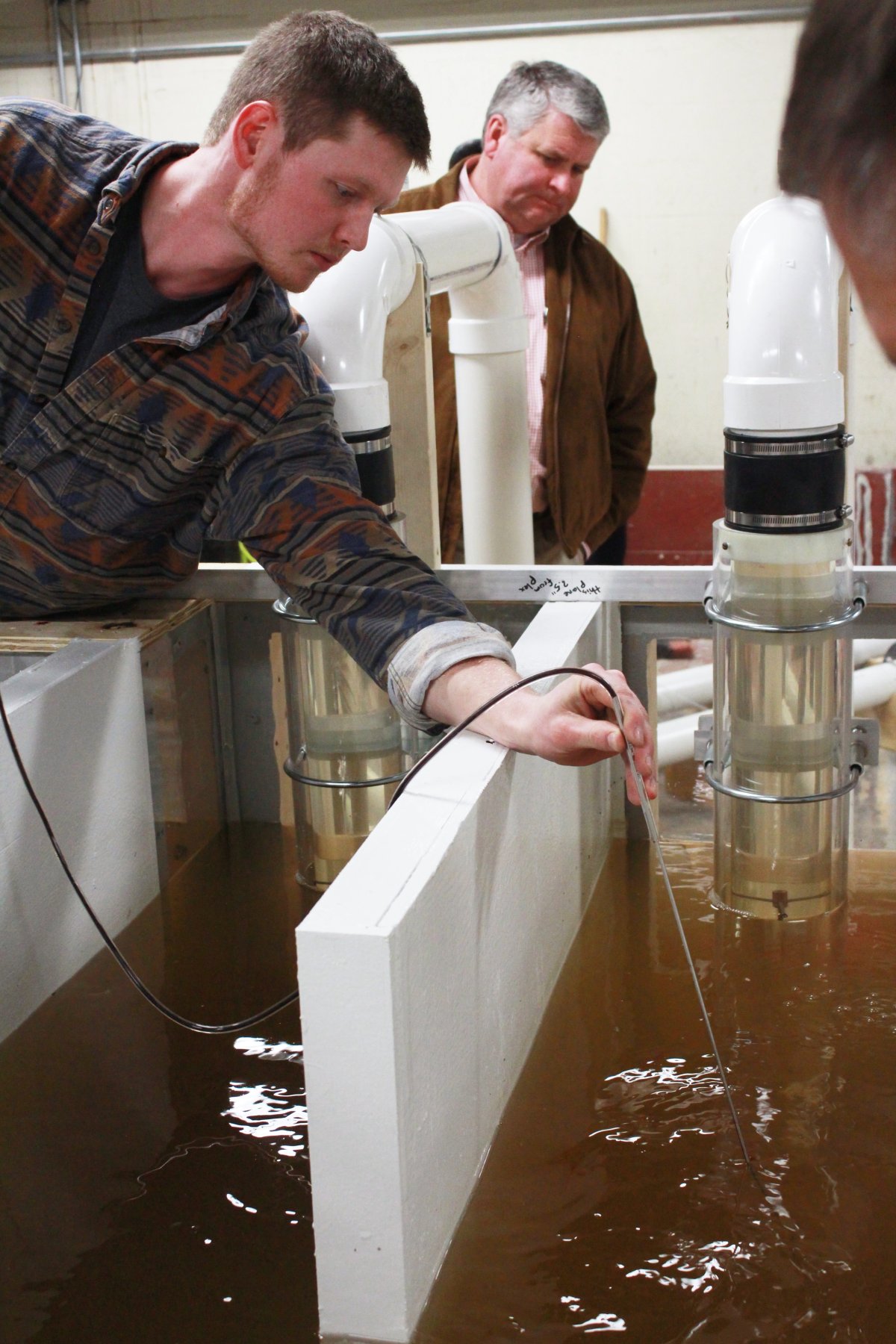Broadway Pump Station Physical Model

Project Summary
After a 2011 flood caused extensive damage in Minot, North Dakota, MWH Americas, Inc. was hired to design a pumping station as part of the Mouse River Enhanced Flood Protection Plan, to pump stormwater over the river levee during flood events. The applied engineering team at the St. Anthony Falls Laboratory was then tasked to build a physical model of the proposed pumping station to identify and mitigate unanticipated/unacceptable flow patterns prior to construction. Specifically, researchers were to evaluate hydraulic conditions leading to excessive wear and tear on pumping equipment. These adverse conditions include swirl angle, vortexing, and uneven approach velocities.
Methods
SAFL engineers built an 1:7 scaled undistorted geometric representation of the pump station. Froude similarity was used to scale the flow; Froude similarity ensures that the ratio of inertial (velocity) and gravitational forces in the model is the same as in full scale. The model was constructed on the SAFL model floor to an accuracy of ⅛ inch. Engineers used a SAFL data carriage laser to precisely verify model wall vertices after construction. The model was also built with some clear pipe and wall sections for better viewing flow at the pump intakes.
The pump station has two inlets. The north inlet brings in municipal stormwater and the west inlet brings in water from a river meander which will be bypassed with a newly constructed diversion for some river flooding events. Effluent water from the pump station is send over river levees and into Mouse River

Experiments were performed at the lowest water surface elevation for each pump scenario in order to find any potential unfavorable flow conditions. Researchers took measurements throughout testing; orifice plates were used to measure flow, a Vectrino+ Acoustic Doppler Velocimeter (ADV) was used to measure velocity, and a swirl meter was used to measure flow swirl.
Outcomes
The model experiments showed that the pump station would operate acceptably in most scenarios. The following cases of lower performance were observed: occasional reverse flow out of the center bay, infrequent excessive pipe swirl angle at intake 6, and occasional rotational flow in the pumping chamber reservoir due to velocity differences entering the chamber.
The SAFL modeling team put together a list of recommendations for modifying the proposed design and operations based on data collected from the experimental runs; recommendations included modifying confluence chamber upstream of pumping reservoir, changing the pumping sequence, and maintaining channel operation.
Future Work
Physical model reporting to MWH completes University of Minnesota’s contribution to this particular project, however, similar modeling projects could be completed at SAFL in the future.
MWH continues with design work of the Broadway pumping station, and construction of the Broadway pumping station is in progress.
